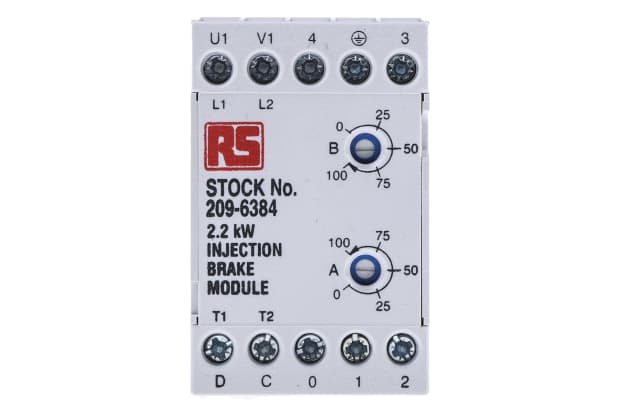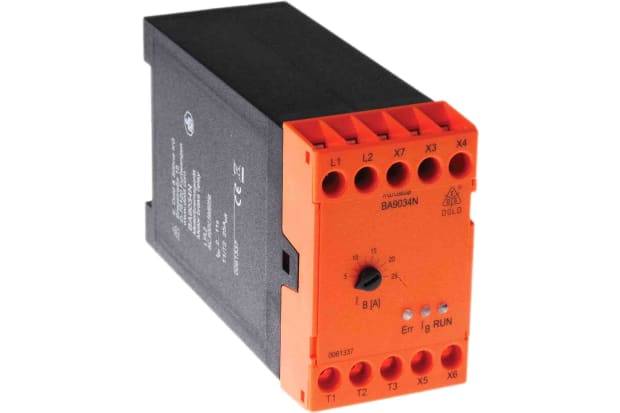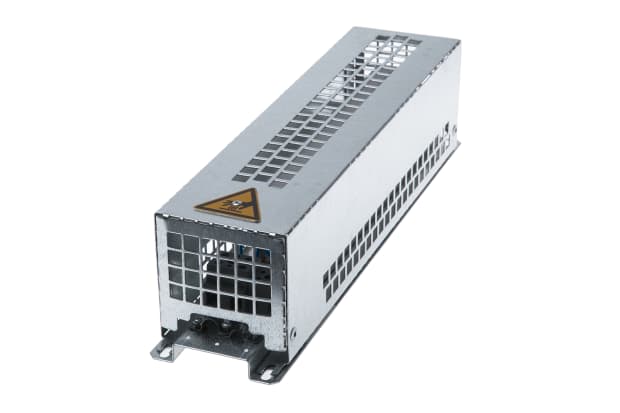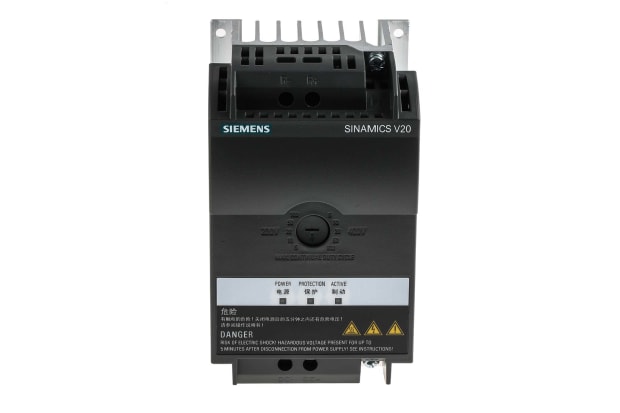- Published 9 Apr 2024
- Last Modified 9 Apr 2024
- 8 min
Choosing the Right Brake Modules: Factors to Consider for Optimal Performance
Learn the basics, types, and key factors for optimal performance.

What are Brake Modules?

In the realm of automotive and industrial machinery, brake modules play a pivotal role in ensuring safe and controlled deceleration. These essential components are integral to the braking systems of various vehicles and machinery, providing a reliable means to bring them to a halt. Let's delve into the fundamentals of brake modules and gain a clearer understanding of their purpose and functionality.
Defining Brake Modules
Brake modules, also referred to as brake control modules, are sophisticated devices designed to manage and regulate the braking system of a vehicle or machinery. These modules serve as the brain behind the braking operation, orchestrating the coordination of various components to achieve optimal performance.
At their core, brake modules receive signals from the driver or automated systems, interpreting the need for deceleration. They then engage with the braking components, such as brake pads, callipers, and rotors, to execute the desired level of braking force. Essentially, brake modules act as the control centre, ensuring a seamless and responsive braking experience.
How Do Brake Modules Work?
Having established what brake modules are, let's now dive into the intricate workings that make these components the linchpin of effective braking systems. Understanding how brake modules operate is crucial for both automotive professionals and DIY enthusiasts seeking to optimize the performance of their vehicles or machinery.
Signal Interpretation
At the heart of brake module functionality lies the adept interpretation of signals. When a driver presses the brake pedal or an automated system detects the need for deceleration, the brake module receives these signals. This initiation sets off a chain of events within the module, signalling it to take control of the braking process.
Microprocessor Magic
The microprocessor within the brake module acts as the mastermind, processing incoming signals and making split-second decisions. It takes into account various factors, including vehicle speed, brake pedal pressure, and external conditions. This dynamic analysis allows the brake module to adjust the braking force applied to the wheels, ensuring a responsive and controlled slowdown.
Sensor Symphony
Key to the precise functioning of brake modules are the sensors incorporated into the system. These sensors continuously feed real-time data to the microprocessor, providing a comprehensive view of the vehicle's dynamics. Wheel speed sensors, brake fluid pressure sensors, and others contribute to the module's ability to adapt to changing circumstances, such as slippery roads or uneven terrain.
Actuator Action
Once the microprocessor has processed the incoming signals and determined the optimal braking strategy, it engages the actuators. These are responsible for applying the necessary force to the brake components, such as brake pads and callipers. The timely and coordinated action of actuators ensures a smooth and effective braking experience, preventing skidding and maintaining control.
Advanced Features Integration
Modern brake modules go beyond basic braking functions, incorporating advanced features for enhanced safety and performance. Anti-lock Braking Systems (ABS), Electronic Brakeforce Distribution (EBD), and traction control are examples of features that leverage the capabilities of brake modules. These additions contribute to improved stability, reduced stopping distances, and overall safer driving conditions.
Different Types of Brake Modules
With a foundational understanding of how brake modules operate, it's time to explore the diverse landscape of these critical components. Different types of brake modules cater to specific vehicles, applications, and performance requirements. Whether you're involved in the automotive industry, industrial machinery, or are a DIY enthusiast, knowing the variations in brake modules can guide you towards choosing the right fit for your needs.
1. Electro-Hydraulic Brake Modules (EHBM):
Overview: EHBM combines hydraulic and electronic control, offering precise brake modulation.
Functionality: Integrates with ABS and other advanced braking features for improved safety.
Applications: Common in modern passenger vehicles and high-performance automobiles.
2. Electronic Stability Control (ESC) Modules:
Overview: Focuses on maintaining vehicle stability by individually controlling wheel braking.
Functionality: Mitigates skidding and loss of control, especially in challenging driving conditions.
Applications: Standard in many vehicles, particularly those with ABS and traction control systems.
3. Regenerative Brake Modules:
Overview: Harnesses kinetic energy during braking to generate electric power.
Functionality: Increases overall energy efficiency by converting braking energy into electricity.
Applications: Common in hybrid and electric vehicles, contributing to extended battery life.
4. Anti-lock Braking System (ABS) Modules:
Overview: Prevents wheel lock-up during braking, maintaining steering control.
Functionality: Rapidly modulates brake pressure to prevent skidding on slippery surfaces.
Applications: Found in a wide range of vehicles, from passenger cars to commercial trucks.
5. Hydraulic Brake Control Modules:
Overview: Traditional hydraulic systems with electronic enhancements for optimal control.
Functionality: Integrates with ABS and other safety features, ensuring efficient braking.
Applications: Widely used in various automotive and industrial applications.
Common Applications for Brake Modules

Now that we've dissected the types of brake modules, let's shift our focus to their practical applications. Brake modules are integral components in a multitude of settings, ensuring the safety and efficiency of braking systems. Whether you're navigating city streets in your car or overseeing heavy machinery on an industrial site, understanding the common applications of brake modules is crucial.
1. Automotive Sector:
Passenger Vehicles: Brake modules are a fundamental part of the braking systems in cars, ensuring responsive and controlled deceleration for everyday driving.
Commercial Vehicles: Trucks and buses utilize advanced brake modules, often integrated with ABS, to enhance safety during heavy-duty operations.
2. Industrial Machinery:
Construction Equipment: Brake modules play a critical role in the braking systems of construction vehicles, providing precise control over deceleration in dynamic environments.
Material Handling Equipment: Forklifts and other material handling machinery rely on brake modules for safe and efficient operation in warehouses and manufacturing facilities.
3. Aerospace Applications:
Aircraft Braking Systems: Brake modules are essential for managing the braking systems in aircraft, ensuring safe landings and taxiing on runways.
Space Exploration: Even in the realm of space exploration, brake modules contribute to controlled landings and manoeuvres of space vehicles.
4. Renewable Energy:
Wind Turbines: Brake modules are employed in the braking systems of wind turbines, allowing for controlled stopping and adjustments during maintenance.
5. Rail Transportation:
Trains and Light Rail: Brake modules are integral to the braking systems of trains, contributing to safe and reliable stops during passenger and freight transportation.
6. Marine Industry:
Ship Braking Systems: Brake modules are used in the braking systems of ships, ensuring controlled deceleration during docking and navigation.
Key Considerations for Choosing Brake Modules
Selecting the appropriate brake modules is a critical task that involves considering various factors to ensure optimal performance and safety. Whether you're a tradesman, industry professional, or DIY enthusiast, understanding these key considerations will guide you in making informed decisions when it comes to choosing brake modules for your specific application.
1. Application-Specific Requirements:
Identify Your Needs: Clearly define the requirements of your application, considering factors such as vehicle type, weight, and operating conditions.
Specialized Features: Some applications may benefit from specialized features like regenerative braking in electric vehicles or ABS for enhanced safety.
2. Compatibility with Existing Systems:
Integration: Ensure that the selected brake modules seamlessly integrate with existing braking systems and any additional features present.
Communication Protocols: Check compatibility with communication protocols used in the broader vehicle or machinery control system.
3. Performance and Safety Standards:
Certifications: Verify that the brake modules adhere to industry and safety standards, ensuring compliance with regulations.
Performance Metrics: Consider factors such as response time, precision, and reliability to meet the performance demands of your application.
4. Environmental Considerations:
Temperature Range: Evaluate the brake modules' performance across a range of temperatures, especially if your application involves extreme environmental conditions.
Protection Ratings: Check for appropriate protection ratings against elements like water, dust, and other environmental factors.
5. Maintenance and Serviceability:
Accessibility: Assess the ease of accessing and servicing the brake modules to streamline maintenance tasks.
Diagnostic Capabilities: Opt for modules with built-in diagnostic features to facilitate troubleshooting and minimize downtime.
Brake Modules FAQs
Popular Brands
Browse related products from RS PRO
Browse related products from Schneider Electric
Browse related products from Siemens

